Victory Ships Carried U.S. to Victory
World War II Cargo Ships Hauled Troops, Supplies
Victory Ships were the icon of American industrial might
During the latter part of World War II, military planners requested that the U.S. Maritime Commision construct a new class of attack transport ships. Designers converted the recently designed Victory class ships into a troop transport, which the U.S. Navy christened the Haskell class, designated VC2-S-AP5. These ships were 455 feet long with a beam of 62 feet and a draft of 24 feet. Loaded displacement was 10,680 tons, and she carried a complement of 56 officers and 480 enlisted men. A single shaft oil-fired turbine drove the vessel at speeds as high as 18 knots.
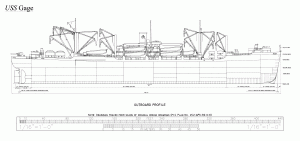
During the war, the Maritime Commission oversaw the construction of 414 Victory ships; 117 of these were configured as attack transports. The U.S.S. Gage is the only remaining ship afloat in its original configuration.
In 1943, the U.S. Maritime Commission proposed the construction of a new class of cargo vessels based the design of a British fast cargo ship which could operate outside of convoys. The basic design was 445’ long, 63’ abeam, and had a draft of 28’. Two key requirements for the new class: the deadweight had to equal a Liberty ship and it needed a minimum speed of 15 knots. When current shipyards were discovered to be unable to handle a ship of 63 feet of beam, the new ship was quickly redesigned to their maximum of 62 feet.
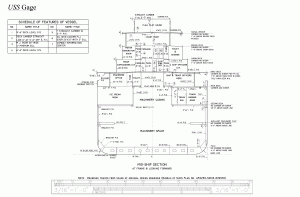
The Maritime Commission designated the new ships as the Victory class and gave them the prefix VC2 in April 1944.
In addition to speed, another consideration for building the Victory class was postwar disposal. American planners thought that the characteristics of the Victory class would appeal to ship owners and that the steamship companies would purchase the vessels at the conclusion of hostilities. The Maritime Commission planned a high production schedule for the Victory class to replace the Liberty class, but disagreements with the War Production Board stalled construction until the end of 1943.
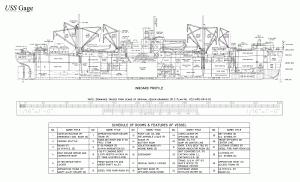
Naval architects based the structure of the AP5 around a modified hull for berthing, cargo, and equipment for the assault troops. By the spring of 1944, American naval forces were preparing for the amphibious assaults in the Marianas and the timely production of troop transports was essential to their invasion plans. Planners designed the ship to carry 1,596 troops (86 officers and 1,510 enlisted), 1,800 pounds of heavy vehicles and supplies, 25 assault boats, and 1 captain’s gig. Gasoline tanks in the inner bottom carried 40,000 gallons of fuel for the landing craft and vehicles. Special davits and cranes were designed for the loading and unloading of equipment.
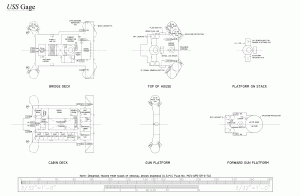
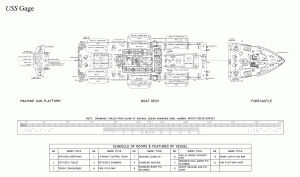
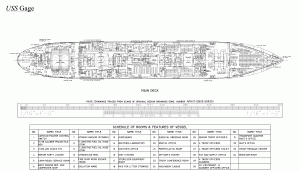
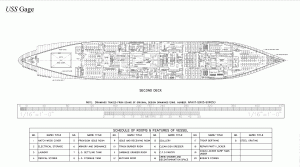
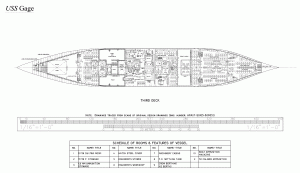
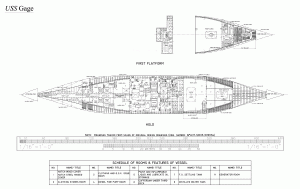
The captain’s quarters were beneath the bridge and berthing for the ship’s officers were one deck below on the boat deck. Berthing for troop officers was on the main deck, along with the ship and troop officers’ mess, a galley, doctors’ offices, sick bay rooms, an operation room, and a radio room. The berthing area for the ships’ crew and troops were on the second and platform deck where racks (beds) were stacked four high on both levels to maximize the space available.
The main galley was amidships on the second deck, along with preparation rooms and food storage rooms on the third deck. The ship’s distilling equipment could generate up 40,000 gallons of fresh water a day. Extensive ventilation ducts throughout the ship helped to keep the air fresh during the voyages in sultry tropical climates.
The U.S.S. Gage was fitted with a Westinghouse cross-compound steam turbine with Westinghouse double-reduction gears. The engine rating was 8,500 horsepower that turned a 21’-7” propeller for a cruising speed of 15 knots and 17 knots at flank speed with a cruising range at 7,200 nautical miles. The Combustion Engineering boilers were oil fired and used forced draft water tubing with super heaters and economizers. The boilers working pressure was 465 pounds per square inch at 750°F.
Victory ship frames were spaced 36” apart to strengthen the hull and improve flexibility; this reduced the stress fractures that affected the Liberty ships. The raking stem and cruiser stern provided better hydrodynamics.
During World War II, the Maritime Commission armed each ship with three types of guns positioned around the ship to cover the four angles of attack. On the bow, was a medium 40-millimeter Bofor quad mount and two more double-barrel mounts just aft on the port and starboard side atop the forecastle deck. On the boat deck there were six light 20mm Oerlikon antiaircraft guns and four more were mounted above the bridge deck. One heavy 5” dual-purpose gun was located on the stern along with two more double-barrel 40-millimeters.
The U.S.S. Gage was recorded by the Historic American Engineering Record and the U.S. Maritime Administration. Project architects were Johnathan Dowsett and Ashley T. Walker, historian was Brian Clayton, and photographer was David Haas.
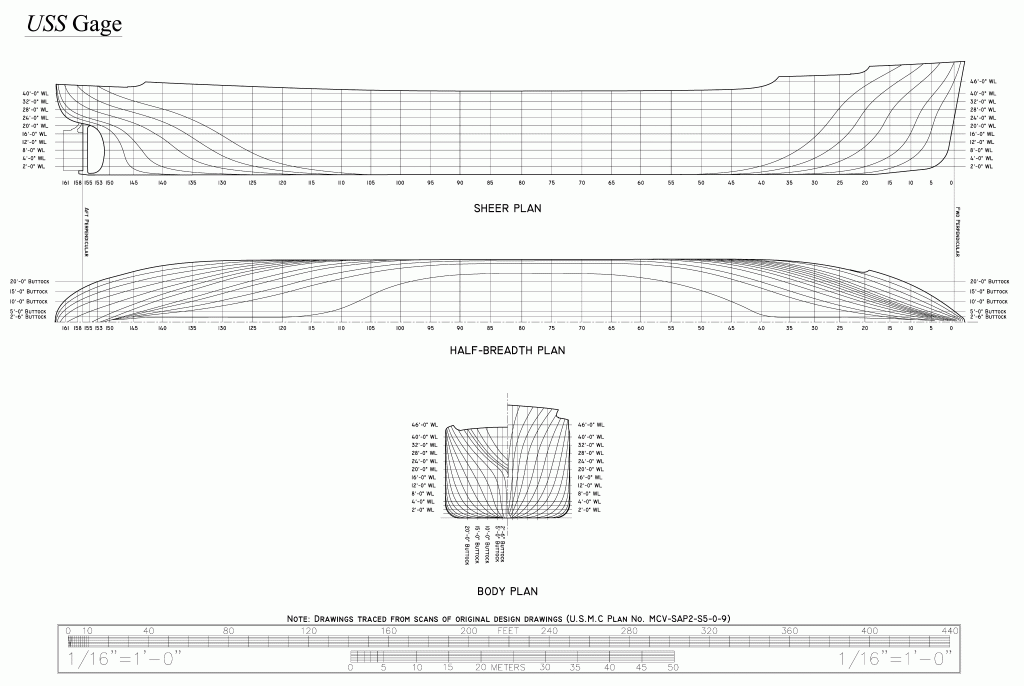
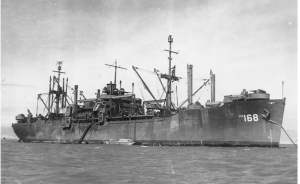
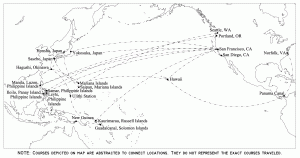
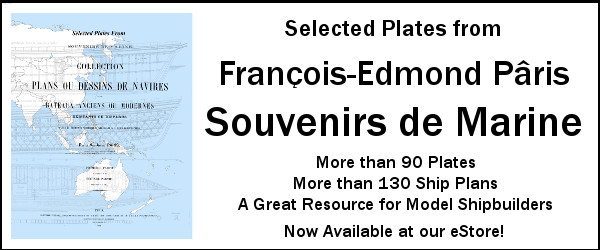
[…] If you want to combine these with an alternative plan, you can visit our fellow site The Model Shipwright and reach USS Gage Victory Ship plans by clicking here. […]
[…] Toward of end of World War II, military planners requested that the U.S. Maritime Commission construct a new class of attack transport ships.Converting the recently designed Victory class ships into a troop transport, designers created the Haskell class. Of 414 Victory ships built during the war, 117 were configured as attack transports. The U.S.S. Gage is the only remaining ship afloat in its original configuration. We have her plans on our Victory Ship U.S.S. Gage page. […]
Does there exist a plastic…not wood…plastic model kit for a WWII vintage Victory ship, the kind of vessel I once sailed in….
I don’t know of any currently offered plastic kits of the Victory class ships, although I think Lindberg once offered a kit of the earlier Liberty class. Blue Jacket offers a solid-hull wood kit of the Victory class ship where the hull is pre-carved and just needs a little sanding.
I believe there was an early plastic troop transport version by either Revell or Renwall.
Revell has a Haskell class USS Montrose in 1.375.
However it is a old kit so lots of possibilities for improvements 😉
manufacturer Trumpeter has a kit of Liberty Ship in scale 1/350 but none for Victory in plastic injection. Manufacturer Loose Cannon Productions has a 1/700 model for Victory ships, resin with details in photoetch ( metal ).
[…] Victory ship USS Gage […]
I have a question. I want to make a scale model of the SS Red Oak Victory, but was wondering how similar she is to the Victory ship plans available on this site?